10,000 IU of Vitamin D taken daily for 3 years is safe – RCT
Safety of High-Dose Vitamin D Supplementation: Secondary Analysis of a Randomized Controlled Trial.
J Clin Endocrinol Metab. 2019 Nov 20. pii: dgz212. doi: 10.1210/clinem/dgz212.
Billington EO1, Burt LA1, Rose MS2, Davison EM1, Gaudet S1, Kan M1, Boyd SK1, Hanley DA1.

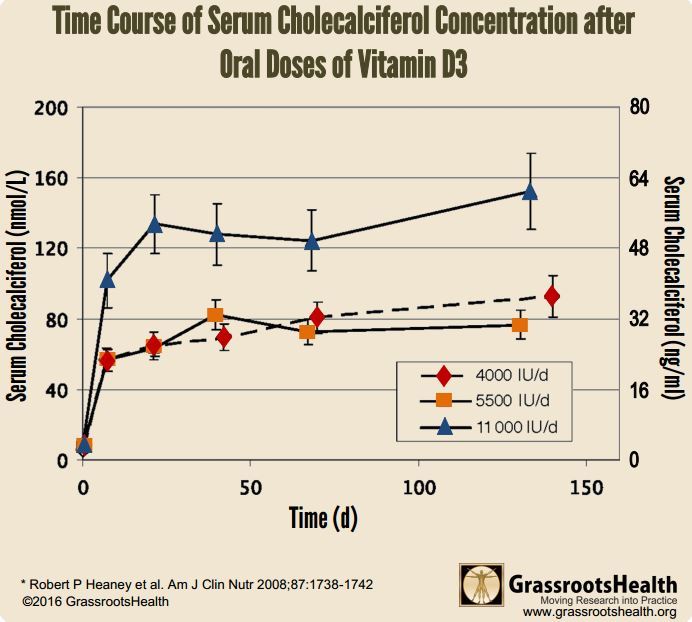 10,000 IU of Vitamin D for 7 years with no excessive Calcium in 4,800 patients – Dec 2018 Calcium was NOT added
10,000 IU of Vitamin D for 7 years with no excessive Calcium in 4,800 patients – Dec 2018 Calcium was NOT added
 10,000 IU of Vitamin D is too much if you also take Calcium supplements – RCT Sept 2018
10,000 IU of Vitamin D is too much if you also take Calcium supplements – RCT Sept 2018
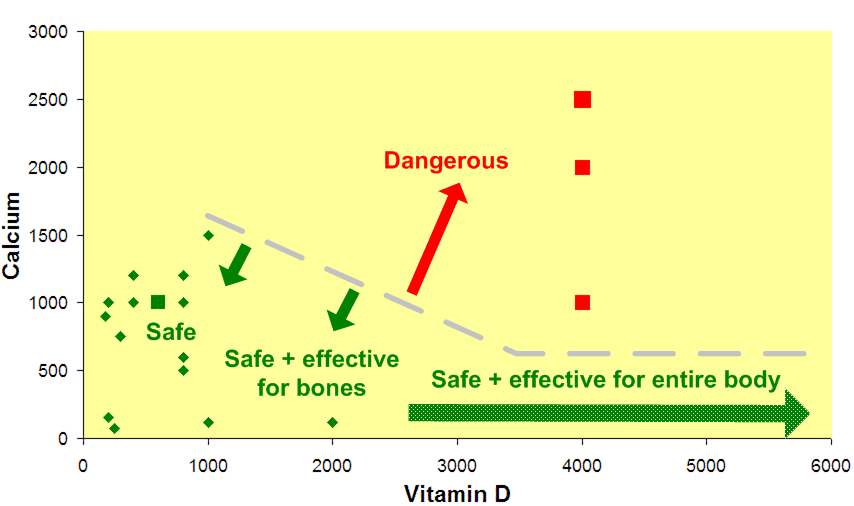 Green diamonds = supplements actually sold
Overview Vitamin D Dose-Response
Green diamonds = supplements actually sold
Overview Vitamin D Dose-Response
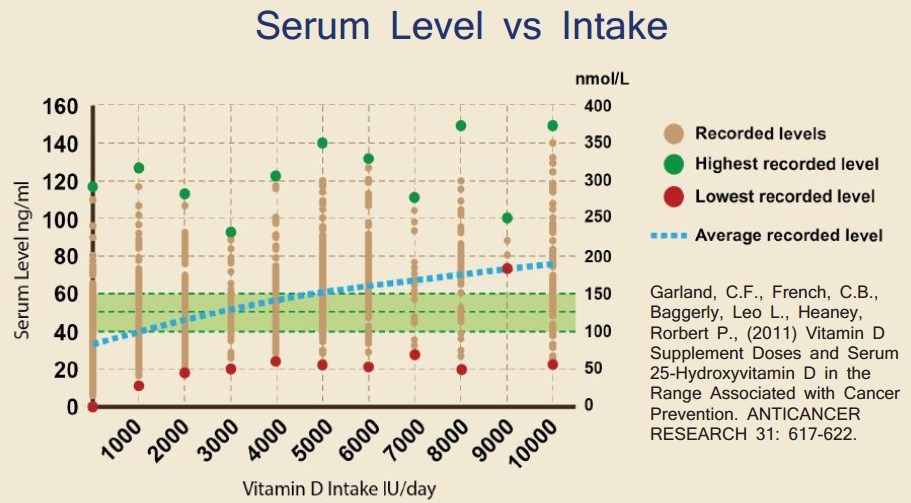 Huge variation in response to vitamin D supplementation – personal vitamin D response index – Dec 2016
Wide response to 3,200 IU daily
Huge variation in response to vitamin D supplementation – personal vitamin D response index – Dec 2016
Wide response to 3,200 IU daily
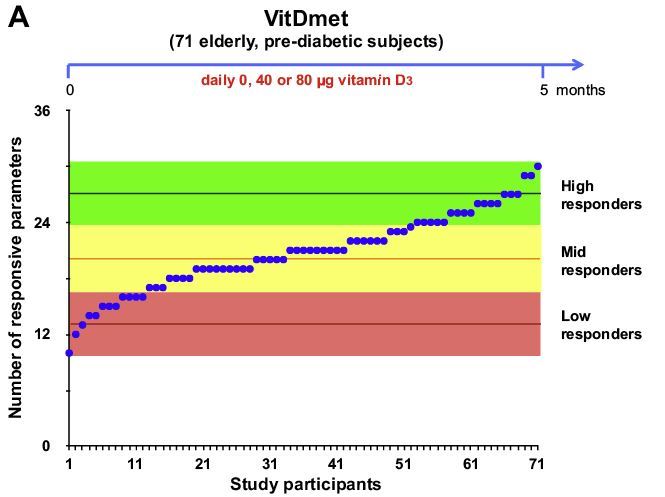 Response to vitamin D increased 30 percent with Magnesium - Nov 2018
4,000 IU of Vitamin D is OK - 19 organizations agree - 2018
and 6 organizations said 10,000 IU daily was OK
Reasons for low response to vitamin D includes many charts, such as:
Response to vitamin D increased 30 percent with Magnesium - Nov 2018
4,000 IU of Vitamin D is OK - 19 organizations agree - 2018
and 6 organizations said 10,000 IU daily was OK
Reasons for low response to vitamin D includes many charts, such as:
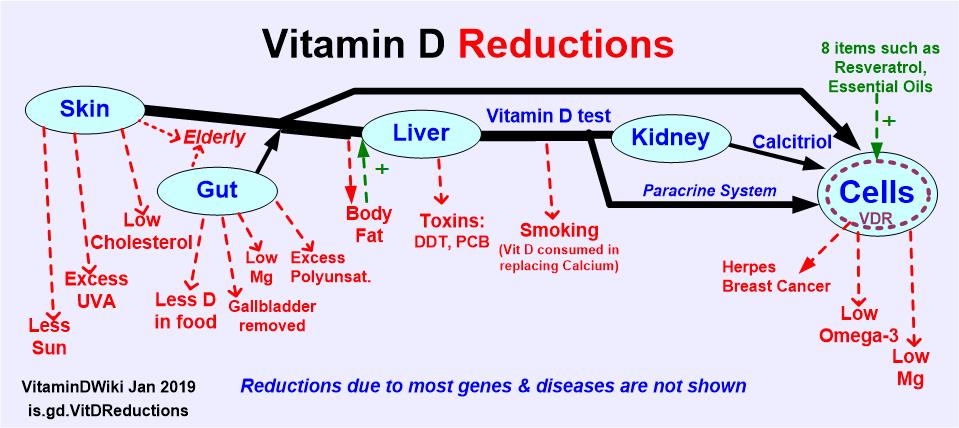
📄 Download the PDF from Sci-Hub via VitaminDWiki
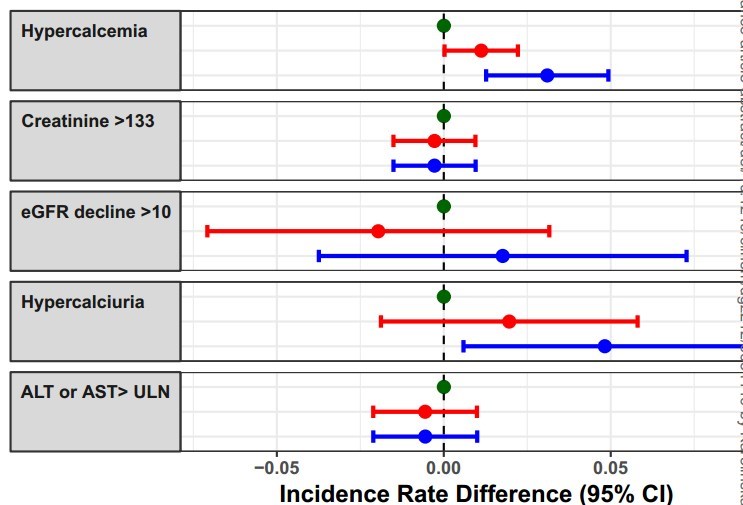
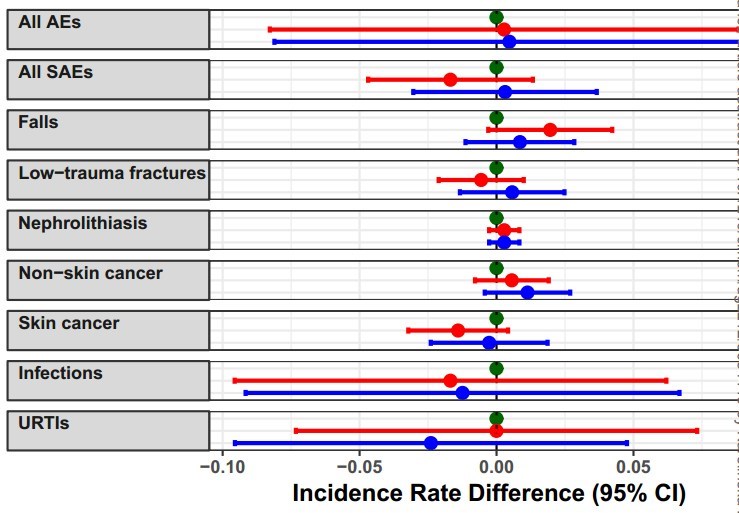
CONTEXT: Over 3% of adults report vitamin D intakes ≥4000 IU/day, but the safety of this practice is unknown.
OBJECTIVE: To establish whether vitamin D doses up to 10000 IU/day are safe and well-tolerated.
DESIGN: The Calgary Vitamin D Study was a three-year double-blind RCT.
SETTING: Single-centre study at the University of Calgary, Canada.
PARTICIPANTS: Healthy adults (n=373) aged 55-70 with serum 25-hydroxyvitamin D 30-125 nmol/L.
INTERVENTIONS: Participants were randomized 1:1:1 to vitamin D3 400, 40000 or 10000 IU/day. Calcium supplementation was initiated if dietary calcium intake was <1200mg/day.
MAIN OUTCOME MEASURES:
In these pre-specified secondary analyses, changes in serum 25-hydroxyvitamin D, calcium, creatinine, 24-hour urine calcium excretion, and incidence of adverse events were assessed. Between-group differences in adverse events were examined using incident rate differences and logistic regression.
RESULTS:
Of 373 participants (400:124, 4000:125, 10000:124), 49% were male, mean (SD) age was 64 (4) years, and 25-hydroxyvitamin D 78.0 (19.5) nmol/L. Serum calcium, creatinine, and 24-hour urine calcium excretion did not differ between treatments. Mild hypercalcemia (2.56-2.64 mmol/L) occurred in 15 (4%) participants (400:0%, 4000:3%, 10000:9%, p=0.002); all cases resolved on repeat testing. Hypercalciuria occurred in 87 (23%) participants (400:17%, 4000:22%, 10000:31%, p=0.011). Clinical adverse events were experienced by 365 (97.9%) participants and were balanced across treatment arms.
CONCLUSIONS:
The safety profile of vitamin D supplementation is similar for doses of 400, 4000 and 10000 IU/day. Hypercalciuria was common and occurred more frequently with higher doses. Hypercalcemia occurred more frequently with higher doses but was rare, mild, and transient.
